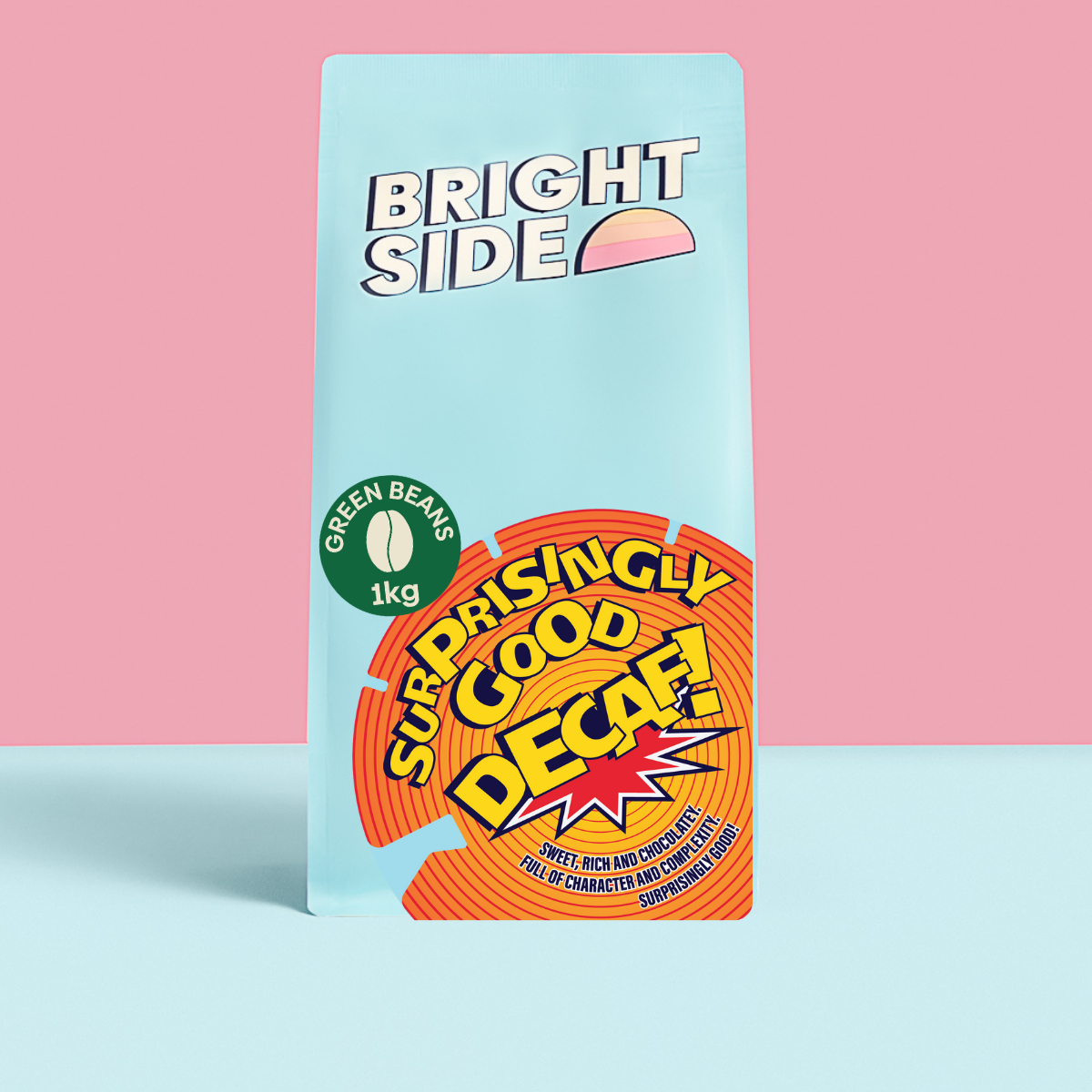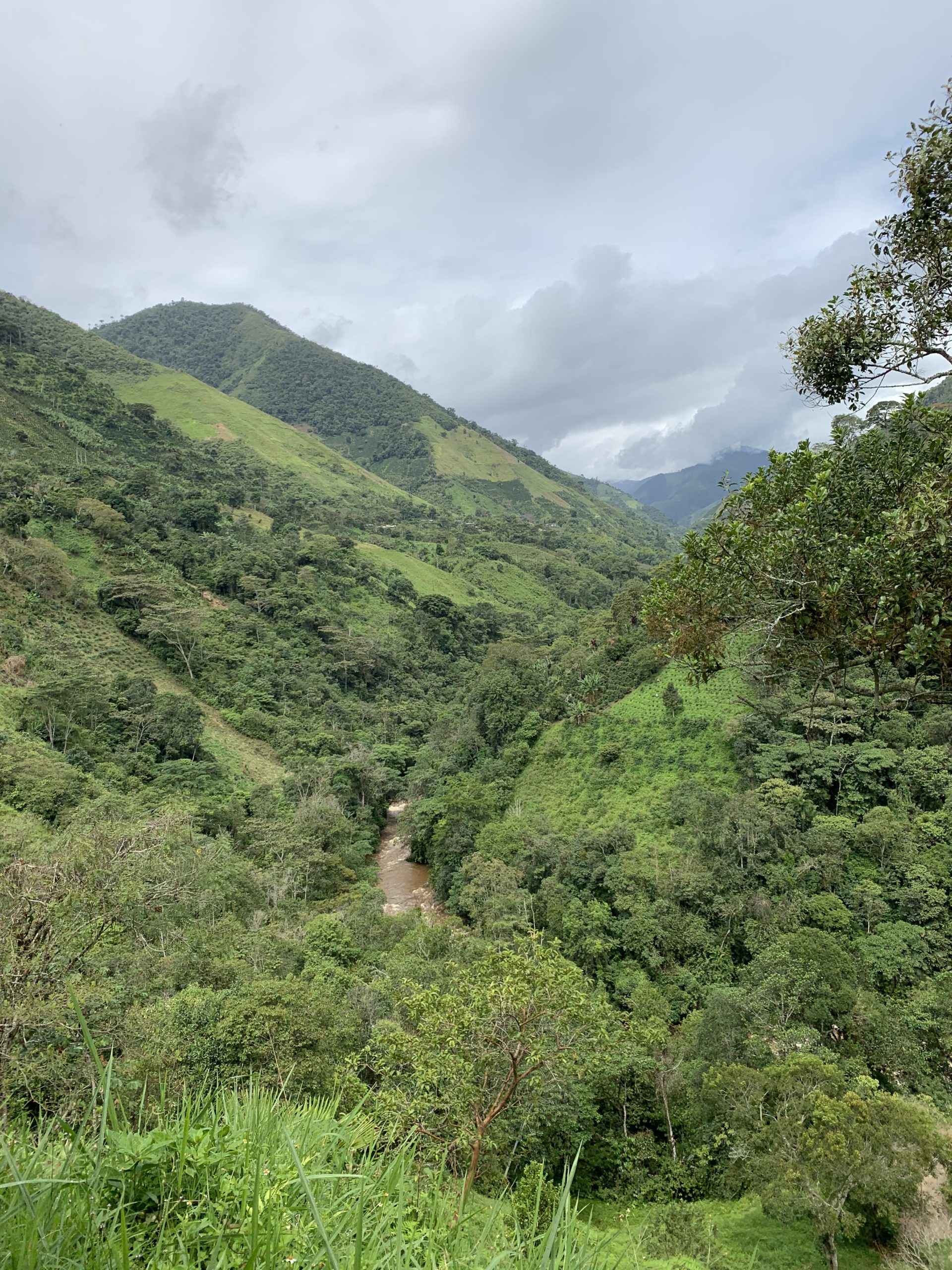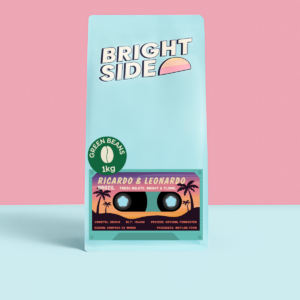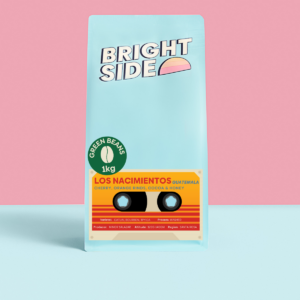Description

About the farmers
The pot of gold at the end of this rainbow… is your cup. *mic drop*
When Azaha put their heads together to answer the decaf question, the conclusion was that great tasting decaf comes from great tasting coffee. Bit of a no-brainer in retrospect. 7 microlot coffee producers blended coffees together that had accompanying flavour profiles that would be clear through the decaffeination process. The coffees are harvested, fermented for 12-48 hours with the coffee fruit on and then 12-62 hours post-wash. Decaffeination occurs post blending, and the farmers are paid a premium on the crop.
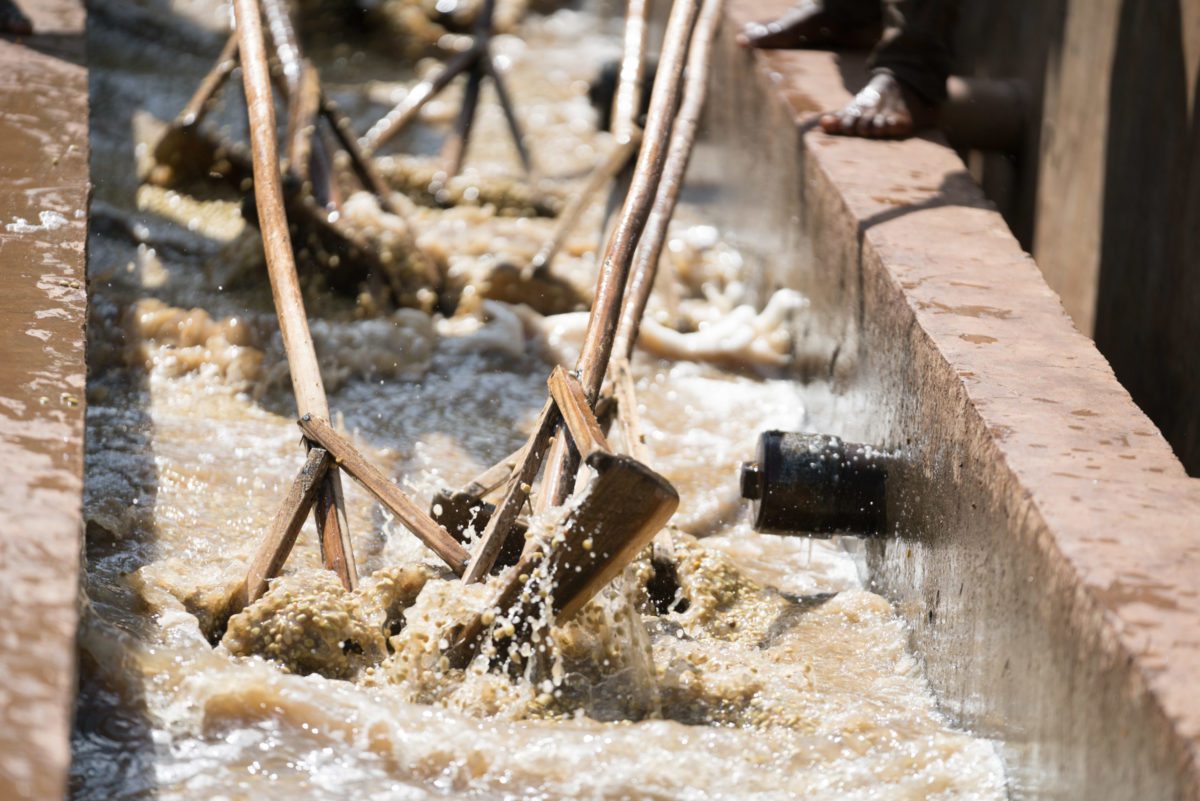
More about decaf:
Ethyl Acetate… sounds yum…. :/
“Ethyl acetate (E.A.) decaffeination is a natural process that maintains the integrity of green-coffee flavor.” Well, that’s what Cafe Imports says, anyway. To me, decaf always has a much different flavour to regular coffee. I still think it should be celebrated though!
Ethyl Acetate process put simple: Beans are soaked in water till they swell up and become porous. Then, the coffee is rinsed and washed with Ethyl Acetate, and some mysterious witchcraft happens where plus and minus link up or something, and then the caffeine finds its way into your can of Redbull you think no one knows about. So yeah, that’s Ethyl Acetate decaf. Moral of the story is, to get a good decaf, you need to start with a great coffee. Thankfully, this Cordillera coffee is nothing short of delicious.
Roasting notes:
Decaf can be a tricky one…
Decaf coffee is naturally darker in appearance because of the decaffeination process, so you’ll have to consider than when watching the coffee as it roasts. The internal structure of the coffee bean is a bit weaker than non-decaf beans so the colour progressions will happen pretty quickly.
Take a bit more control by roasting a bit slower than you might be used to, and push the roast time and temperatures out a bit higher and longer to get a real deep rich chocolate flavour through milk without that baked bean kinda vibe decaf can sometimes have.
Check out the Coffee Roasting Jargon post if this isn’t making much sense!

Green Coffee Questions
Do You Have A Strong Coffee?
Coffee is as strong as you make it, and the roast profile has a pretty significant impact on that. Finding a coffee that sounds right for you starts with the tasting notes. If the tasting notes sound good, then you can make a strong tasting coffee with it. If you want flavours that are typically associated with “strong” coffee, like dark chocolate or toasty flavours, then keep an eye out for those tasting notes.
Experiment with longer roasting to develop more intense flavours.
How Should I Store My Green Coffee?
Green coffee beans are shipped in a vacuum sealed food saver bag, and can be stored in the freezer to keep the coffee fresh for years. Once opened, keep the coffee stored in the bag it came in, and just fold it over to keep it fresh for up to a year or more!
The best way to store your roasted coffee is in a cool, dark place, right inside the Brightside coffee bag it came in. They’ve kept coffee fresh, and they do a pretty swell job of it.
What If I Don’t Like My Green Coffee?
Our lineup of unique coffees is ever changing, as coffee harvests arrive and make their way into Brightside roasters coffee roasters and brewers. We make sure we have a few different options to cover a broad range of preferences, so we are pretty confident you will find something you like.
But we understand that not every coffee will be to your taste. If you ever get a coffee that isn’t quite right, or has missed the mark a bit for you, we will replace it for free. Email us at hello@brightside.coffee and we will be thrilled to help you.
Or if you think you can get a better experience out of the coffee with the right knowledge and tools, check out our brew guides and roasting intel, or email us at hello@brightside.coffee and we can get you up to speed on coffee roasting at home.
What Is Specialty Coffee?
Coffee that scores 80+ out of 100 can be classified as specialty coffee, in line with the Specialty Coffee Association’s guidelines. Scoring is based on the coffee quality, taste, flavor clarity and defects. All of our coffees are specialty grade. Sustainably and ethically sourced coffee beans from our trusted sourcing partners. Read about our coffee sourcing bare minimums here.
How Long Does Brightside Green Bean Coffee Stay Fresh?
Green coffee beans are shipped in food safe vacuum sealed bags and will stay fresh in their packaging indefinitely/for several years. Once opened, try to keep the coffee in a cool dry place, and fold over the bag to keep the coffee fresh for a year or more.
What Do These Funky Roasting Words Mean?
Roasting can be a bit of a handful, and the more you dive into it the more complex it gets. Remember to keep it simple and just start experiementing and taking notes on what tastes good and how you roasted it.
For a quick run down on the most common roasting terms and what they mean, check out the Coffee Roasting Jargon post.
What’s on the label
What’s on the coffee bag label?
There’s a fair whack of info on the label, and we are pretty keen on sharing as much as we can with you about every coffee we sell. The information is good, but we have specific reasons for sharing it, that can help you understand coffee better and roast and brew better coffee at home.
The name of the coffee
Single origins are coffees that come from a specific geographic area. But there are different levels of specificity around coffee origins, from a country of origin, to a growing region, co-operative, farm, and even down to individual lots of coffee trees on a specific farm. We source coffees from specific farms when possible, or co-ops for origins that have fewer facilities on farms such as Ethiopians or other high grown African coffees.
When we label our coffees for the shelves, we get as specific as possible so you know exactly where the coffee is coming from.
Origin
As we label coffees by farmer, or farm, it’s not always clear where the coffee is grown. The Origin is the country the coffee originates from.
Variety
Coffee trees come in many shapes and sizes, with characteristics adapted to the local climate, growing conditions and sometimes selectively bred in labs. These are called Varietals, and they can paint a picture of the coffee before you even taste it! (cross link to an article on varieties of coffee).
Elevation
Elevation is the altitude the coffee grew at. Higher doesn’t mean better, but denser coffees usually come from higher altitudes. Denser coffees have higher concentrations of nutrients, which affects the roasting and brewing process.
Processing method
Processing is the treatment of the coffee immediately after harvest. Washed, Natural and Honey are the main ones, but you might see some other funky ones from time to time like anaerobic fermentation, or pulped. The processing method affects the flavor profile of the coffee, read this 101 on coffee processing to find out how.
Sourcing Partners
We rely on incredible, responsible and quality driven sourcing partners to broker coffees on our behalf in the market, and we want to honour that relationship by sharing their story and how it aligns with ours. All of our sourcing partners have a spotlight you can read about, so if a particular coffee really blows your mind, and you want to find out more about the source, check out the sourcing partners section.
Taste
The taste or tasting notes are what we all came here for. The unique flavour profile of every coffee is exciting. We want our tasting notes to reflect the coffee but also be inclusive and easy to understand. For green coffees, we supply the sourcing partner cupping and tasting notes, but for our roasted coffees we taste them and describe them ourselves, as roasting style has a big impact on the expression of the flavours in the cup.
Date
The date on roasted coffee is the date the coffee was roasted. The date on green vac sealed coffee is the date the coffee was vac sealed. You’ll probably find the roast date out of the way, or on the bottom of the bag.
That’s about all we could fit. Before you even open the bag, you can get a clear picture on what to expect, how to brew it or roast it to get the most out of it. The anticipation of opening, smelling the coffee, grinding it and brewing is overwhelming, and it all comes together in that amazing first taste of a new coffee experience worth sharing.


